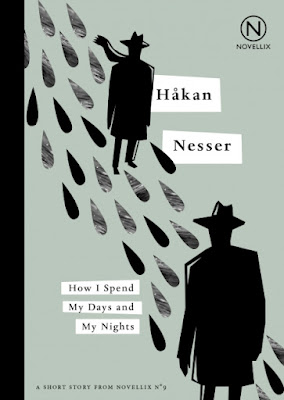|
Booked
(and Printed)
January
2025
January was a cold mother bear in my wooded paradise.
The air temperature dropped below zero for several days and the wind chill
nosedived into the –20-degree range. Plus there were the ten consecutive days
it snowed. Sure, it was light snow, but still… Add a splash of inky black nights
and everything about the month screamed: READ! And so I did.
I finished six books—five
novels and a single non-fiction work, On Tyranny: Twenty Lessons from the
Twentieth Century, which all of us Americans thoroughly ignored this past
November—and four shorts. One of these shorts, “The Longest December,” by
Richard Chizmar, was a pretty terrific novella. While some were better than others,
I liked something about everything I read.
With every new year I
make broad, often malleable reading goals, which are usually meant to
mitigate what I see as reading deficiencies from the prior year or years. This
year I decided one such area—for the past several years—was my intake of
literary works, both old and new. So, my first novel of 2025 was John
Steinbeck’s THE MOON IS DOWN.
Published in 1942, The Moon is Down, was written as anti-Nazi propaganda
and it shows. The characterizations lack Steinbeck’s usual richness and the
setting is painted with a duller brush, but—and this is important—The Moon
is Down is much more than mere propaganda and it can and should be read
as literature. Read my detailed review here.
Next up was the spanking
new thriller, THE MAILMAN,
by Andrew Welsh-Huggins (2025). This speedy and entertaining escapist thriller
is something like Lee Child’s Jack Reacher, but in place of a retired Army
M.P., is a highly trained and outrageously persistent independent deliveryman
named Mercury Carter. I liked it a bunch and if you are of a mind, you can
read my review here.
As for that solitary
non-fiction work, ON TYRANNY,
by Timothy Snyder (2017)—who is a professor of history at Yale—it satisfied
another of my goals for 2025: read more non-fiction. On Tyranny is
a slim but fascinating book about 20 specific things we can learn from
authoritarian regimes of the twentieth century—Hitler, Mussolini, Stalin,
etc.—that can help us stymie those with autocratic designs in our own time. A
few of my favorites from this excellent book are: do not obey in advance;
defend institutions; beware the one-party state; remember professional
ethics; and contribute to good causes. If you’re worried about the
future and want to read something smart and lucid, try On Tyranny. I
bet you can find it at your local library.
BITTERFROST,
by Bryan Gruley (2025), is an uneven legal thriller with a crime novel vibe
and a cool (pun intended) rural Michigan wintertime setting. There are many
things I liked about this one, but the narrative lost some of its drive in
the first half as characters and subplots were introduced. Bitterfrost is
scheduled for release on April 1, and I’ll have a detailed review posted on March 31.
The sophomore entry in
John Keyse-Walker’s Teddy Creque mystery series, BEACH, BREEZE, BLOODSHED (2017), is as
good as the freshman outing. Teddy Creque, now promoted to a full constable in
the Royal Virgin Islands Police Force, is called to the neighboring island of
Virgin Gorda to help track down the shark that attacked and killed a medical
researcher. Teddy makes quick work of the job, but he finds something not
quite right about the young woman’s death. So, as usual, he goes against his
immediate supervisor and keeps investigating. On the way, he finds a new
paramour, a unique smuggling operation, and a murderer. It’s great fun from
the first page to the last and it, simply because it is so laid back and warm, is my favorite read of the month. I’m definitely going to read the next book in
the series.
THE
DISPATCHER, by science fiction master John Scalzi (2016),
is a wildly entertaining pulp novella about a future world where murdered people
reappear (very much alive) in their own home wearing only their birthday
suit. Tony Valdez earns a living as a dispatcher—he mostly works high risk surgeries
where he can “dispatch,” or murder, the patient if the surgery goes wrong,
which gives the patient and their doctors another shot at getting things
right. When Valdez’s friend, Jimmy Albert, goes missing, Valdez is roped into
helping the police find him. The investigation leads the reader into the seamy
underbelly of the dispatch business. It’s a fun ride all the way through.
|
|
As for short stories, January was a middling month.
Not for quality, but rather for quantity. I only read four, but I enjoyed them
all. Stephen King and Stuart O’Nan’s “A FACE IN THE CROWD”
(2012)—which I read in a double format with the Richard Chizmar novella we’ll
look at next—is a Twilight Zone-style tale about death and baseball. It
didn’t quite meet my expectations, I mean King and O’Nan, right?, but it
was still pretty good.
“THE LONGEST DECEMBER,”
by Richard Chizmar (2023), is a sweet crime novella with an inventive take on
the serial killer tale. It reminded me of Alfred Hitchcock and the film Seven
blended with Chizmar’s own secret sauce. And it really works! I’ve reviewed
this one, but it hasn’t been posted yet…so check back soon.
I’m embarrassed to admit
that “MARIJUANA AND A PISTOL”
(1940), is my first experience with the writing of Chester Himes. This
dizzying little story—it’s probably only about 2,500 words—reads like
anti-marijuana propaganda, but its hardboiled prose and stark view of
humanity give it punch. It originally appeared in Esquire and I read
it in Hard-Boiled, edited by Bill Pronzini & Jack Adrian (1995).
Finally, Robert Sampson’s
“TO
FLORIDA”
(1987), is a noir gem with an unexpected ending and a brutal vision of
humanity’s lowest instincts from the first page to the last. I liked it. You
can read my review here.
|



















